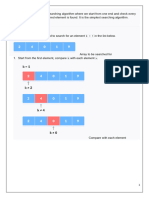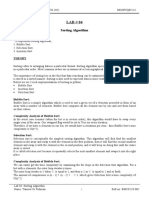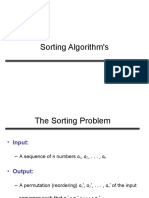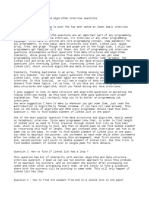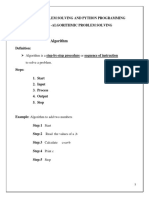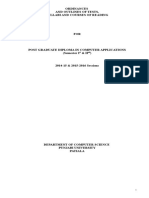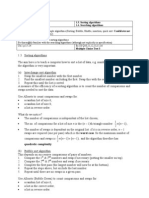0% found this document useful (0 votes)
18 views11 pagesSORTING
The document describes three sorting algorithms: Bubble Sort, Selection Sort, and Insertion Sort. Each algorithm is explained with its process, advantages, and a code example demonstrating its implementation. The document emphasizes that Bubble Sort is inefficient for large datasets, while Selection and Insertion Sorts are simpler and more efficient methods for sorting elements.
Uploaded by
Fallen SmokeCopyright
© © All Rights Reserved
We take content rights seriously. If you suspect this is your content, claim it here.
Available Formats
Download as PDF, TXT or read online on Scribd
0% found this document useful (0 votes)
18 views11 pagesSORTING
The document describes three sorting algorithms: Bubble Sort, Selection Sort, and Insertion Sort. Each algorithm is explained with its process, advantages, and a code example demonstrating its implementation. The document emphasizes that Bubble Sort is inefficient for large datasets, while Selection and Insertion Sorts are simpler and more efficient methods for sorting elements.
Uploaded by
Fallen SmokeCopyright
© © All Rights Reserved
We take content rights seriously. If you suspect this is your content, claim it here.
Available Formats
Download as PDF, TXT or read online on Scribd
/ 11





